
views
Coffee Roasting Basics

Keep smell in mind. When you first begin heating your green coffee beans, they will turn a yellowish color and start to emit a grassy smell. When they actually begin to roast, they will start to smoke and smell like true coffee.
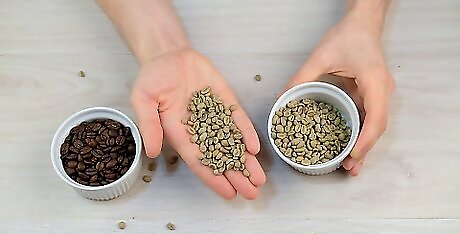
Know that the length of your roast is based on the color of the beans. While you will start out with ‘green’ beans, when they begin to roast, your beans will go through a whole array of color. A good rule of thumb is to keep in mind that the darker the bean, the fuller the body of the bean. Light brown: This color is generally avoided as it can result in a sour taste. The body is weak, the aroma medium and the sweetness low. Light-medium brown: This roast is common in the eastern United States. It has a full body, a full aroma, and a mild sweetness. Full medium brown: This is a common roast in the Western United States. It has a full body, strong aroma, and mild sweetness. Medium-dark brown: This roast is also known as a Light French or Viennese roast. It has a very full body, a strong aroma, and a strong sweetness. Dark brown: This is known as espresso or French. It has a full body, a medium aroma, and a full sweetness. Very dark (nearly black): This is also known as Spanish and Dark French. It has a weak body, a mild aroma, and a low sweetness.
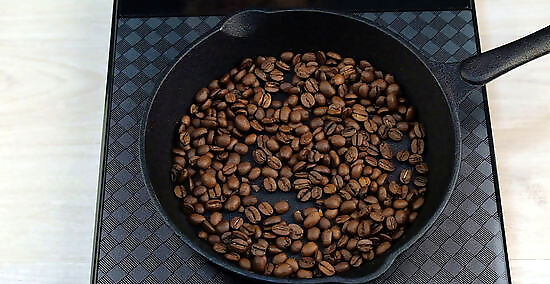
Listen for the crackling sound. As the beans begin to roast, the water inside them will begin to evaporate, causing a crackling sound to occur. There are generally two stages of crackling called first and second cracking. These two sounds occur as the temperature rises while the roasting occurs.
Using an Oven
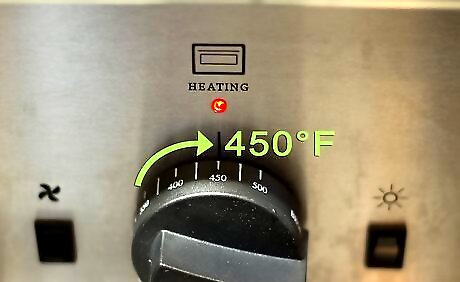
Preheat your oven to 450 °F (232 °C). While your oven is preheating, ready your pan. For this method you will need a baking sheet that has many small holes or slots and a lip that will keep all of the beans in the pan. These pans can be found at any kitchen supply store. If you don’t want to buy a new pan but happen to have an old baking sheet with a lip lying around, you can actually make your own roasting sheet. Take your pan and use a ⅛ inch drill bit to carefully drill holes into the sheet. The holes should be ½ inch away from each other and small enough that none of the beans will fall through them.
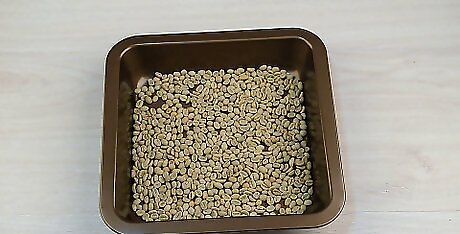
Lay the beans out on the pan. Pour the beans onto the sheet so that they lie in one layer over the entire pan. The beans should be close together but should not be overlapping. Once the oven is preheated, place the baking sheet with the beans onto the middle rack of the oven.
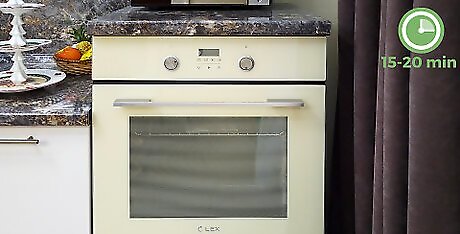
Roast the beans for 15 to 20 minutes. Listening for a cracking or popping noise. This is the water contained in the beans evaporating. The popping noise signifies that the beans are roasting and darkening. Stir them around every few minutes to help them develop an even roast.
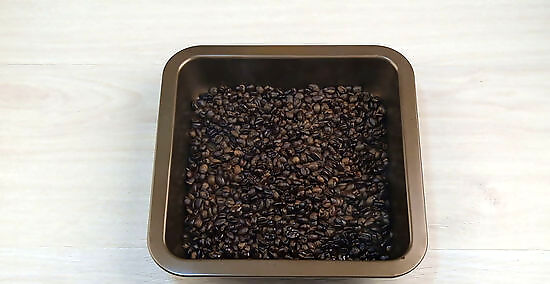
Remove the beans from the oven. When they are roasted to your satisfaction, remove them immediately from the heat. To help them cool down, pour the beans into a metal colander and stir them around. This will help cool the beans as well as remove the chaff.
Using a Popcorn Popper
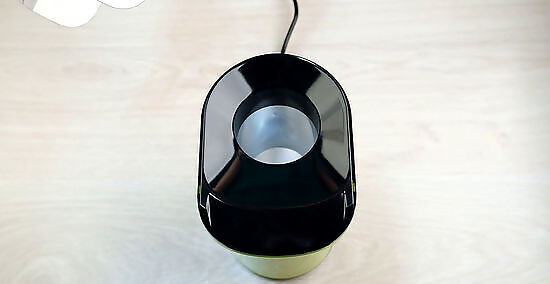
Place the empty popper onto the stove top. Bring it to a medium heat so that the temperature of the popper is about 450 °F (232 °C). If possible, use a deep fryer or candy thermometer to check the temperature of the popper. If you don’t have a popcorn popper and don’t want to buy one, you can use a large skillet or pan. Make sure that it is very clean or else your beans might pick up the flavor of whatever was cooked before them.
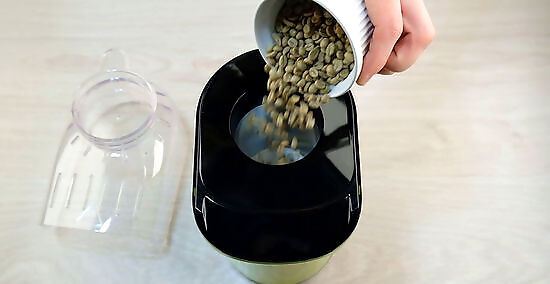
Add the coffee beans. You should only roast 8 ounces of coffee beans at a time. Close the lid of the popper and begin turning the crank handle. You will need to continue stirring constantly so that your beans are roasted evenly. If you are using a pan or skillet you will need to stir constantly as well--there is much more of a chance for the beans to burn in a skillet or pan.
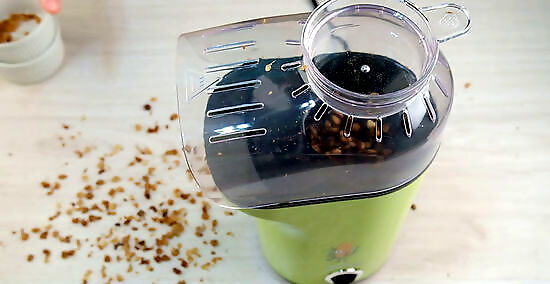
Listen for the crackling noise. After about four minutes (though it can take up to seven minutes) you should begin to hear a crackling sound--this means that the beans are beginning to roast. At the same time, the beans will start producing coffee-smelling smoke that can be really potent. Turn on your oven hood fan and open a window to let the smoke out. Note the time when the beans start to crackle.

Check the beans’ color frequently. After the crackling starts, wait one minute and then begin to check the color of the beans. When the beans have reached the color you want, pour them out into a metal colander and continue to stir them until the beans cool.
Using an Air Roaster
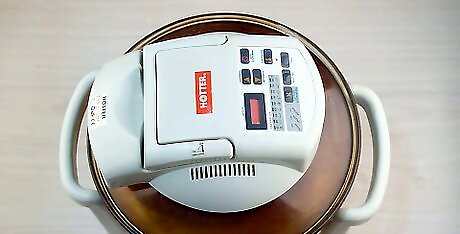
Consider the pros and cons. Mechanized roasters are a more expensive, yet extremely efficient, roasting option. These appliances work in the same way that the popcorn popper does--hot air is blown across the beans. However, these roasters result in a very even roast.
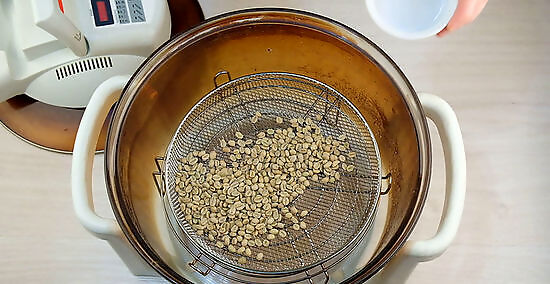
Consider a hot air roaster. These types of roasters are also called fluid bed roasters. This type of roaster has a glass container that allows you to monitor the color of the beans as they roast, allowing you to roast them to your desired color. Roasters of this variety include the FreshRoast8, Hearthware I-Roast 2, and the Nesco Professional. Follow your appliance’s instructions to roast your beans to perfection.
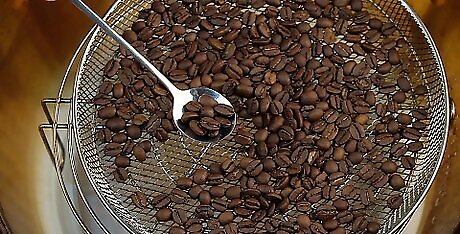
Finished. When using an air roaster to roast green coffee beans, understanding the different roast levels is crucial for achieving the perfect cup of coffee. Roast levels, categorized as light, medium, medium-dark, and dark, offer distinct flavors and characteristics. Light roast preserves the beans' natural flavors, while medium roast balances origin notes with caramelization. Medium-dark brings out smoky and bittersweet tones, and dark roast yields intense flavors. Choosing the right roast level empowers you to craft a coffee experience that suits your taste preferences.












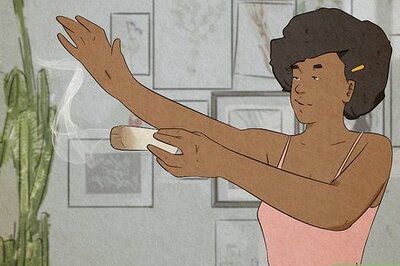

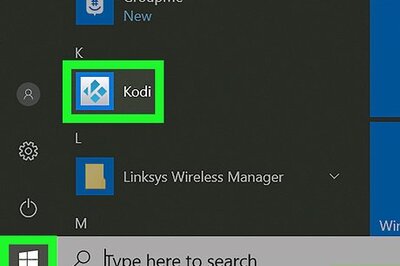



Comments
0 comment